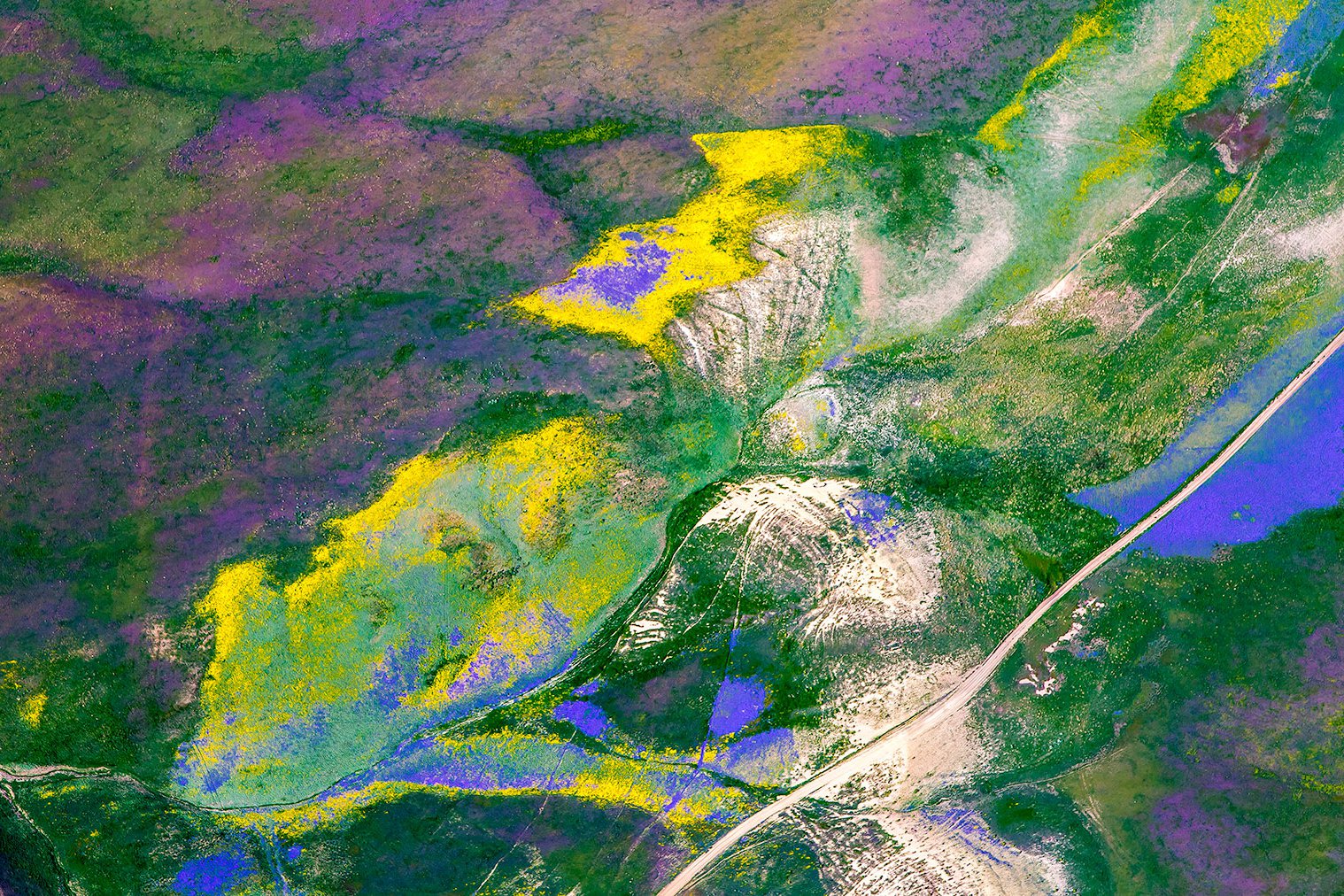
As one the largest remaining undeveloped places along the San Andreas Fault, the Carrizo Plain National Monument in Central California is a hidden gem, sure to captivate visitors and photographers alike with its beautiful, untouched landscapes that are breathtakingly unique. From hiker friendly trails that offer a close up view of stunning scenery, to the wildlife roaming right alongside it’s flourishing fields of millions of colorful wildflowers- Carrizo Plain National Monument will take your breath away.
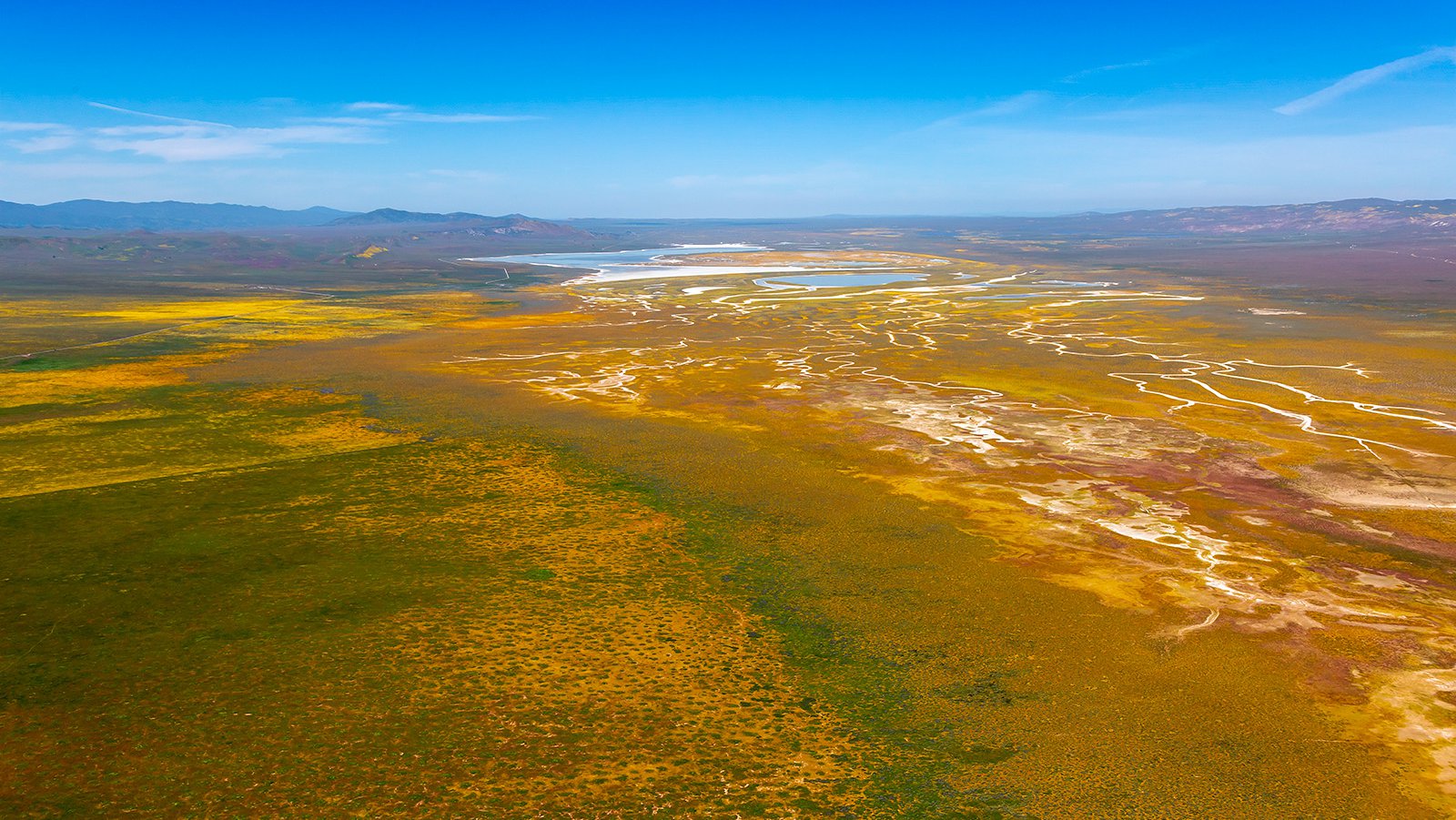
Aerial view of the Carrizo Plain National Monument, a vast expanse of over 200,000 acres of grassy plains, rolling hills, and wildlife, making it one of the largest undeveloped areas in California.
What is the Carrizo Plain National Monument?
Nestled in the heart of California's Central Valley lies one of the state’s most awe-inspiring natural landscapes - the Carrizo Plain National Monument. This vast expanse of grasslands and wildflowers spanning over 200,000 acres is a hidden gem that offers plenty of attractions, from picturesque hiking trails to stunning vistas and unique geological formations. Home to various species of plants and animals, it is the perfect destination for hikers, naturalists, and nature enthusiasts looking for an outdoor adventure.
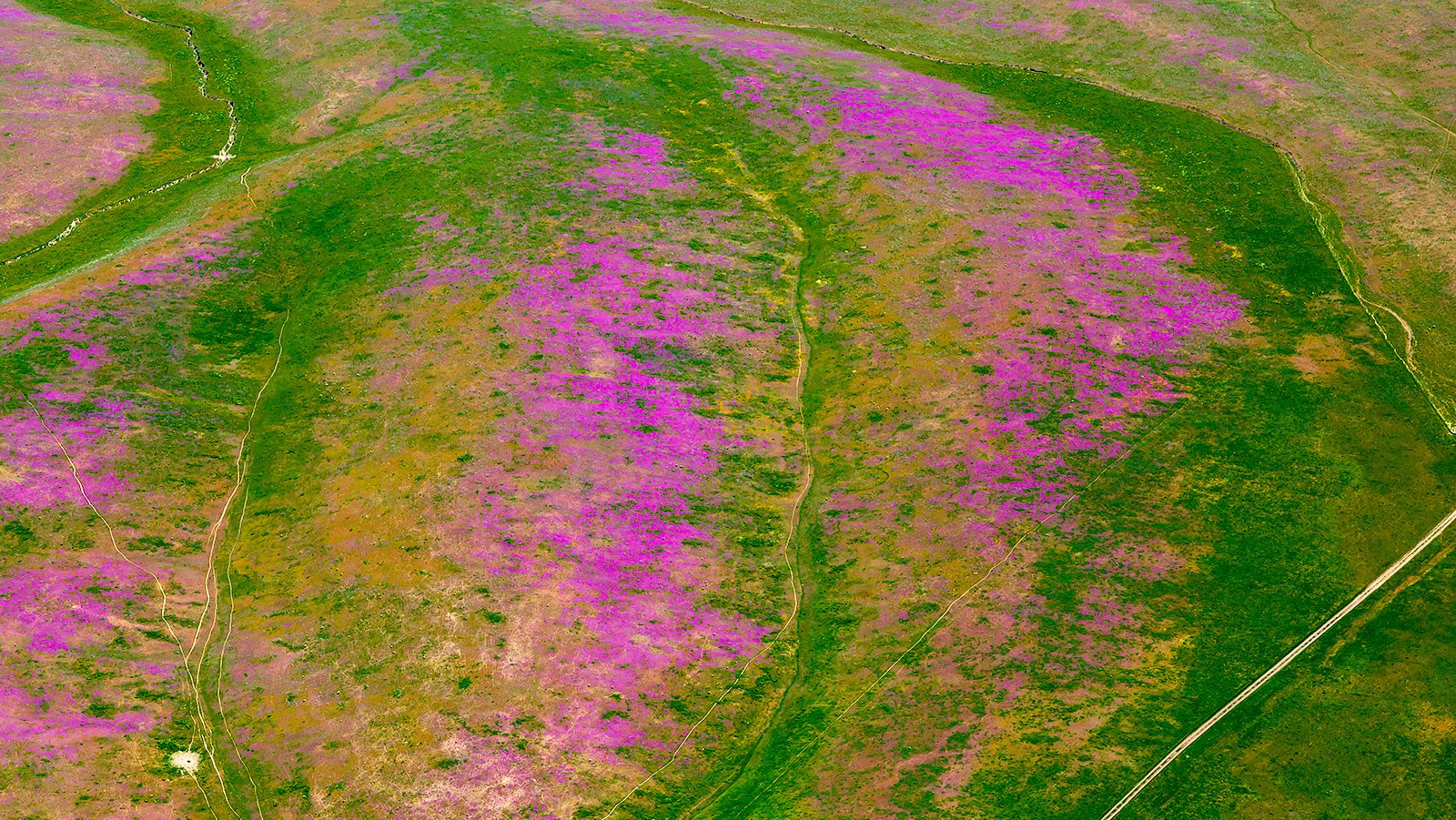
Aerial photograph of purple owl's clover wildflowers blanketing the sprawling grasslands of the Carrizo Plain National Monument, a biodiverse region located in California's San Joaquin Valley known for its rare wildlife and plant species..
Carrizo Plain National Monument's Wildflower Blooms
A Flower Lover’s Paradise
The Carrizo Plain National Monument is best known for its springtime explosion of wildflowers, which cover entire hillsides and create a kaleidoscope of colors. The park’s most famous bloom is that of the Temblor Range, where California's state flower, the golden poppy, reigns. However, visitors will also be delighted to see vibrant displays of lupines, owl's clover, blue dicks, and many other types of wildflowers. The seasonal bloom typically peaks between late March and early April, but it's possible to catch it later in the season, depending on annual rainfall patterns.
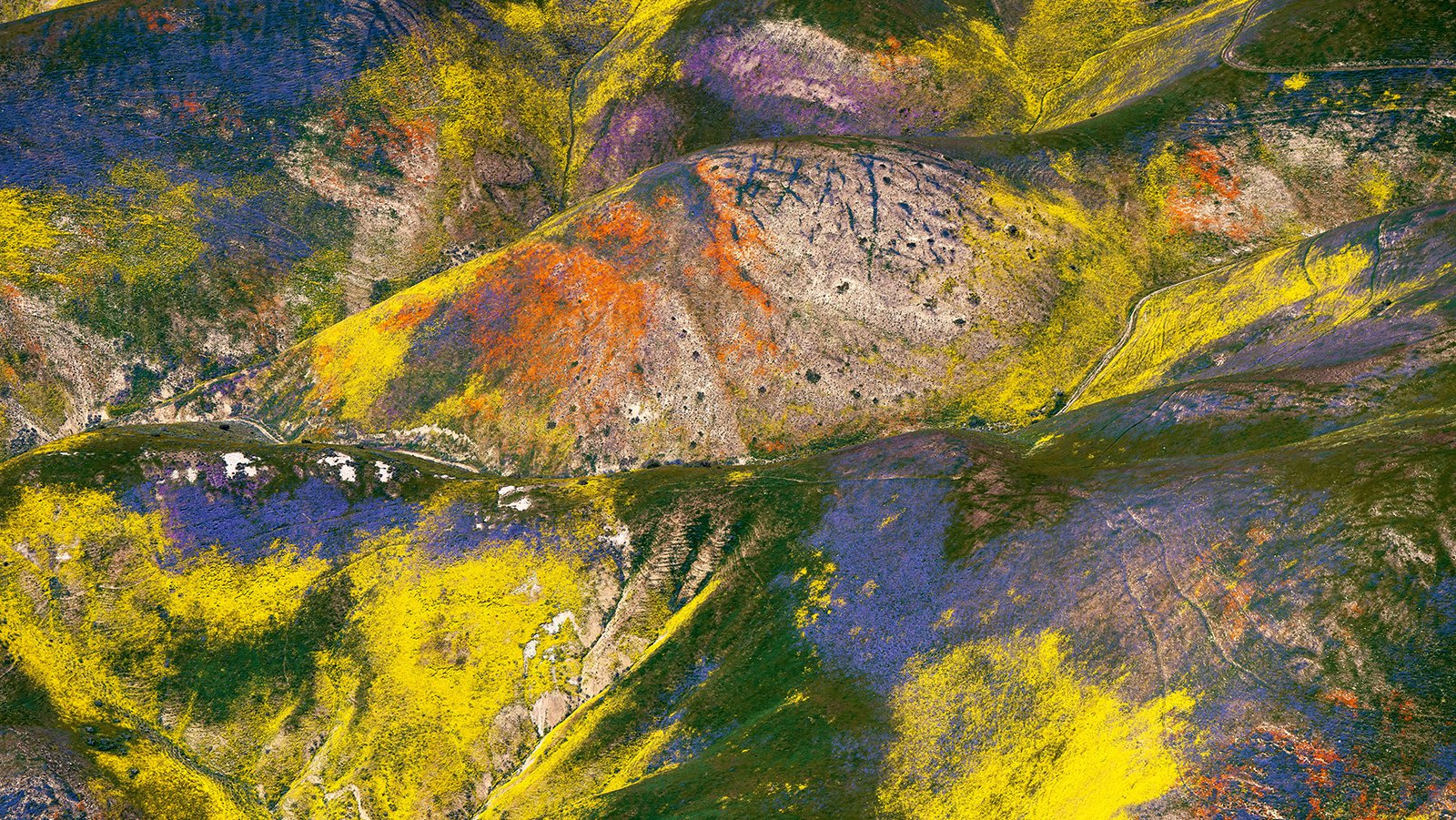
A stunning display of wildflowers blankets the rolling hills of the Carrizo Plain National Monument, a result of the rare "super bloom" phenomenon caused by perfect weather conditions and well-timed rains.
When is the Carrizo Plain National Monument Super Bloom?
If you happen to visit the Carrizo Plain from mid-February to mid-April, you may witness a spectacle that is both stunning and humbling: the Super Bloom. This rare event occurs when the winter rains saturate the soil and awaken dormant seeds of wildflowers. The result is a super bloom, which, at peak bloom, creates an explosion of colors, scents, and textures that transform the plain into a fairy tale land. Hundreds of species of flowers, from poppies to lupines, from tidy tips to phacelias, carpet the landscape and create a feast for the eyes and soul. The Super Bloom draws thousands of visitors every year and it is one of the most popular attractions of Carrizo Plain.
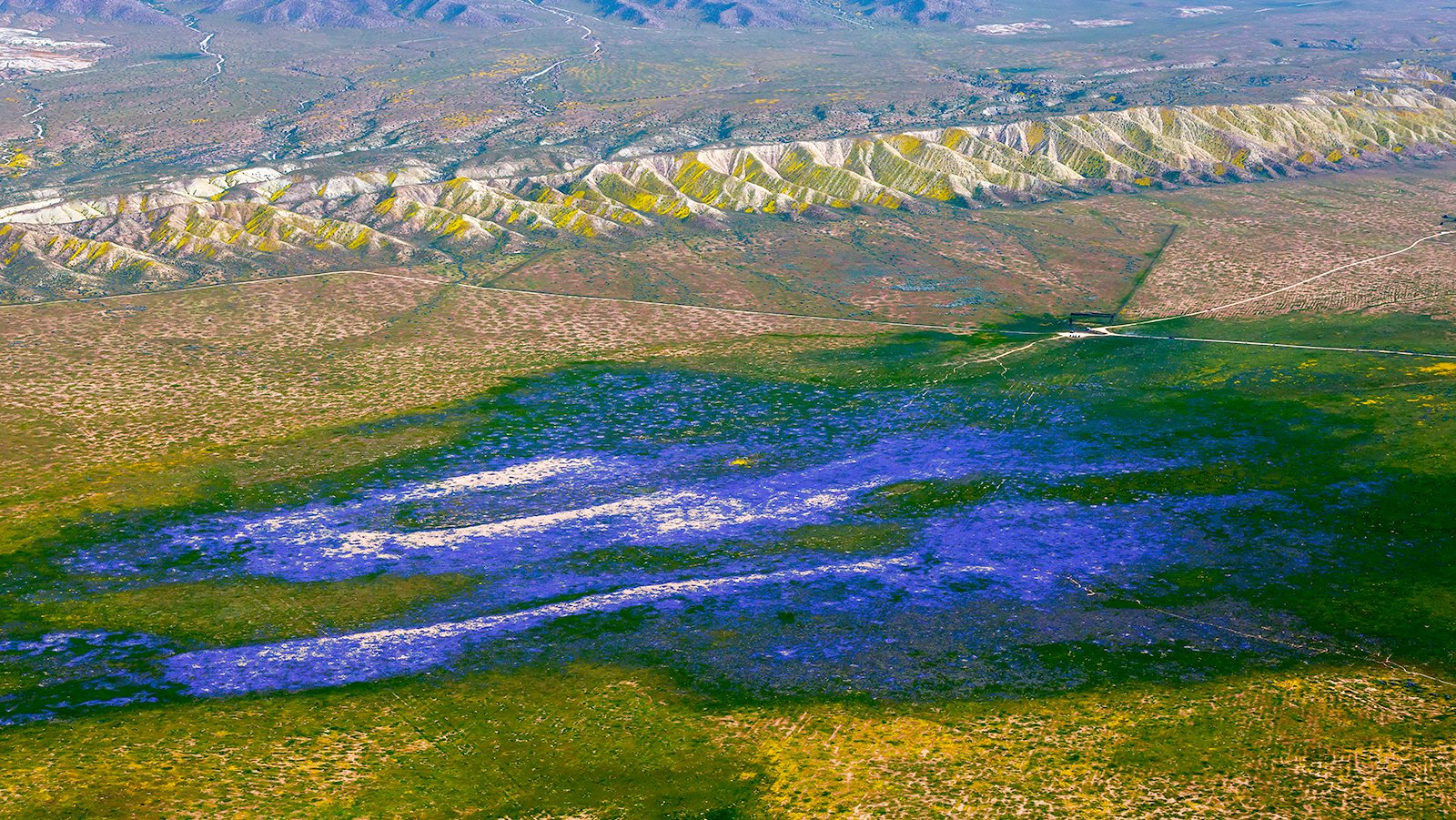
A carpet of blue wildflowers, possibly a mix of lupines, phacelias, and larkspur, amidst the stunning backdrop of vibrant yellow hillside daisies blanketing the San Andreas fault at Carrizo Plain National Monument.
Carrizo Plain's Geologic Marvels
While the wildflowers are the park's star attractions, the Carrizo Plain National Monument also has a fascinating geological history that dates back millions of years. The park's main geologic feature is the San Andreas Fault, a visible tectonic boundary that separates the Pacific and North American Plates and has created some of California's most famous geological features, including the Mojave Desert, the Salton Sea, and the infamous Death Valley. The fault is responsible for the park's unique landscape, which features ridges, sandstone formations, and hills that rise and twist along the horizon. The Caliente Mountain Range which borders the Carrizo Valley also offers spectacular views of geological formations.
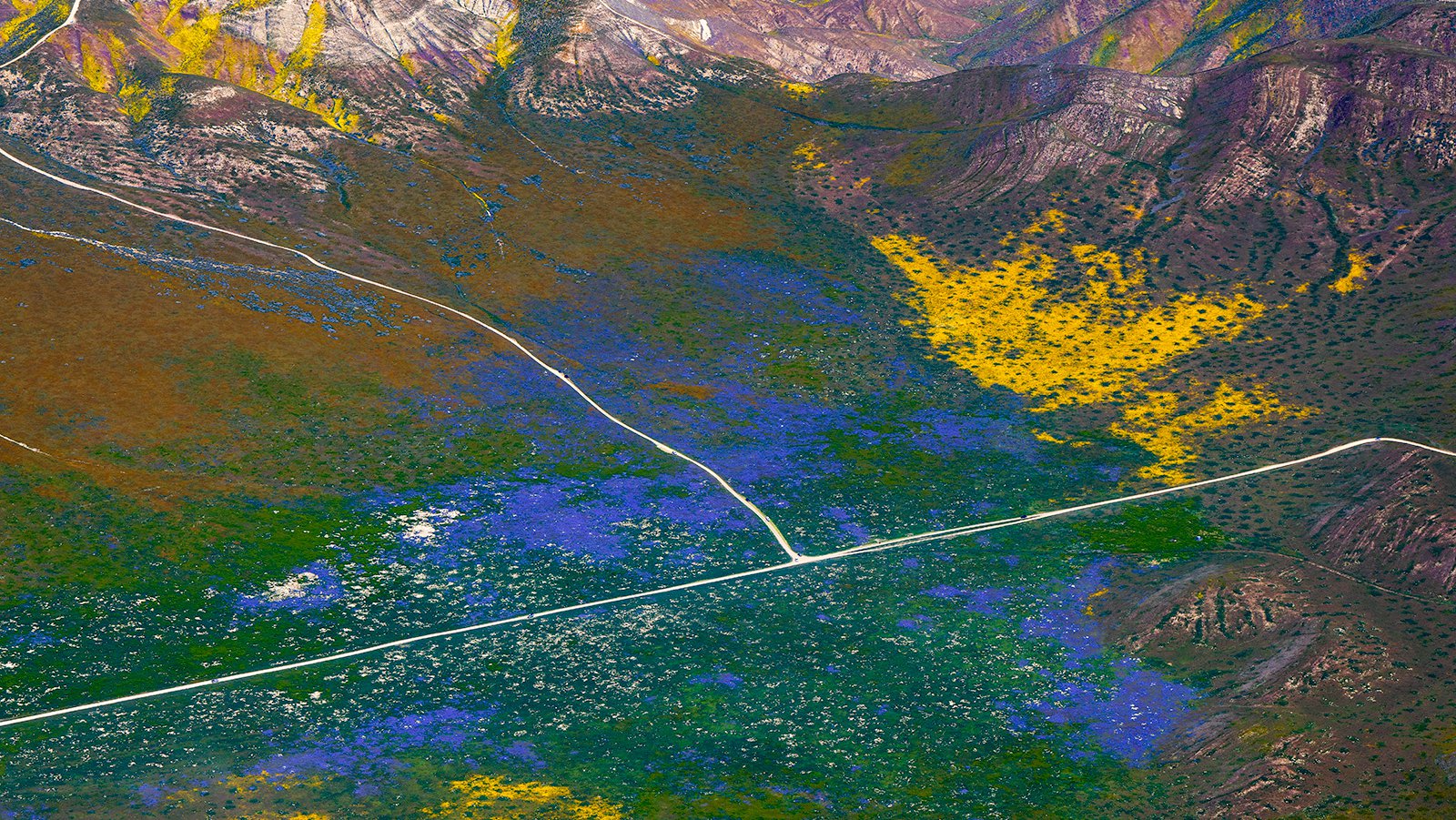
Aerial photo showcasing a vibrant carpet of mixed wildflowers, including chick lupine, phacelias, hillside daisies, valley larkspur, goldfields, fiddlenecks, Mohave sun cups, and San Joaquin blazing stars, scattered amongst the Carrizo Plain National Monument.
Carrizo Plain Hiking Trails
Hikers of all levels will find plenty of options to explore the Carrizo Plain National Monument's diverse landscapes. The park has several well-marked trails of varying lengths, from short loops to multi-day backcountry hikes. Some of the most popular include the Soda Lake Overlook Trail, the Painted Rock Trail (a 2.5-mile moderate hike that takes visitors to a site with ancient Native American rock art), and the Caliente Mountain Trail, a challenging 7.5-mile trek that leads to the park's highest peak, offering stunning panoramic views of the surrounding hills and plains. Each trail has its own rewards, such as panoramic views, colorful rock formations, or hidden canyons. Just bring enough water, food, and sunscreen, and be prepared for sudden weather changes.
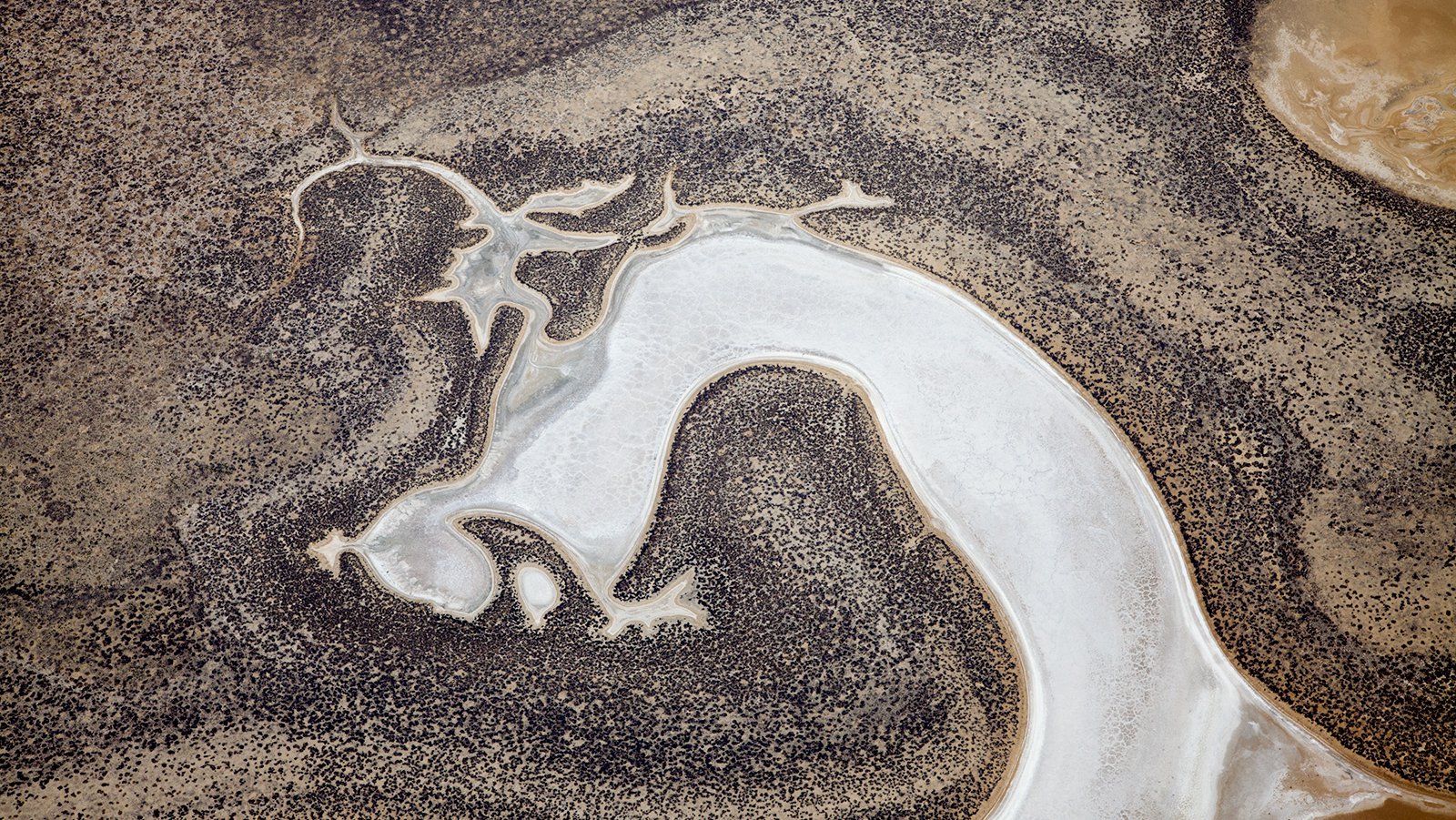
From high above, the irregular outline of Soda Lake's shoreline mirrors the quirky charm of a Dr. Seuss creation.
The View from the Soda Lake Overlook
What sets the Carrizo Plain apart from other national monuments is its breathtaking wildflower fields. The monument is home to more than 400 plant species, including California's state flower, the golden poppy. Between March and May, the fields transform into a sea of vivid wildflowers and the best place to witness these blooming beauties is along the Soda Lake Trail.
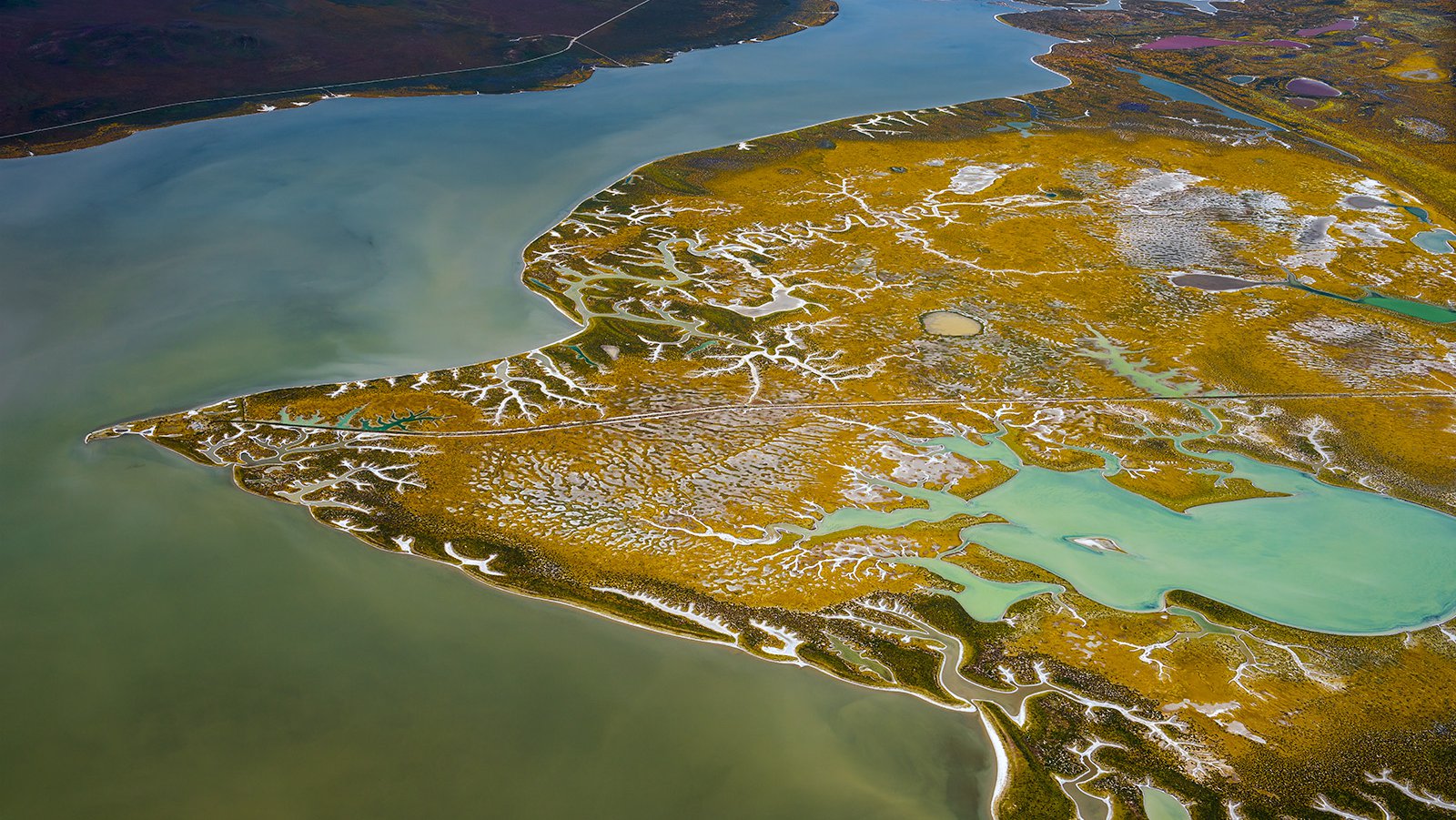
Aerial view of Soda Lake in the Carrizo Plain National Monument, showcasing the abstract shapes created by the white and gray mineral deposits along the shoreline contrasting with yellow flowers blanketing the area.
Soda Lake
The Carrizo Plain park has a saline lake that is one of the few remaining natural alkali wetlands in the state and is an essential water source for a variety of migratory bird species and waterfowl. The briny water attracts millions of brine shrimp and algae, which in turn attract various bird species, including sandpipers, killdeer, avocets, and the endemic tricolored blackbird. The unique geological formations around the lake and the other surrounding hills offers fantastic opportunities for hiking and bird-watching.
Getting to the Carrizo Plain National Monument
The Monument is located about 2.5 hours from Los Angeles and an hour and a half from Bakersfield. There is no entrance fee and the park is open all year round, but some roads and trails may be closed due to weather or maintenance. It is advisable to check the current conditions and regulations before you start on your adventure, as there are no services within the park. Stocking up on supplies like water, food, and fuel are highly recommended, with the nearest communities being Taft, 15 miles from the south entrance, and Santa Margarita, 60 miles from the north entrance. Finally, remember to pack your camera, binoculars, and curiosity.
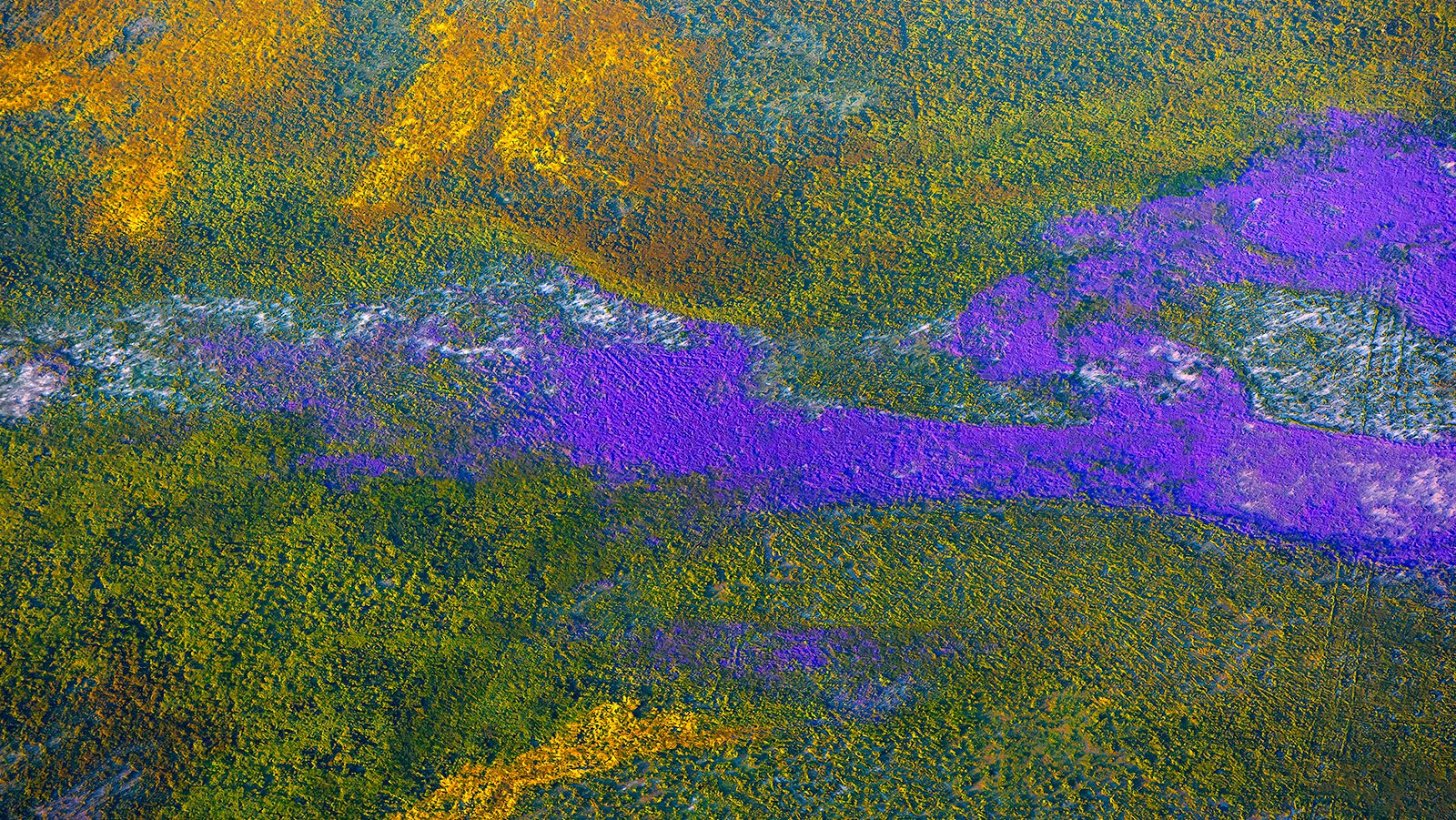
Aerial image capturing a vibrant array of native purple and yellow flowers, blooming in the picturesque Southern California Carrizo Plain National Monument.
Carrizo Plain National Monument may not have the reputation or fame of Yosemite or Joshua Tree, but it has its own allure and charm that make it a hidden gem for nature lovers. It is a natural wonder that provides visitors with a unique opportunity to experience California's diverse ecology and geology up close. Whether you're a hiker, nature lover, or simply want to marvel at the raw beauty of the wildflower bloom, this park is worth a visit. Its remote location may deter some, but those who make the trek will be rewarded with unforgettable vistas, fascinating wildlife, and a sense of peace and solitude that is hard to come by in today's busy world.